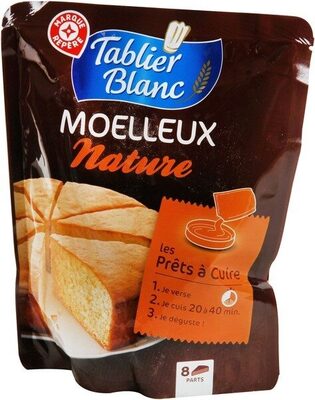Préparation moelleux nature - Marque Repère - 500 g
This product page is not complete. You can help to complete it by editing it and adding more data from the photos we have, or by taking more photos using the app for Android or iPhone/iPad. Thank you!
×
Some of the data for this product has been provided directly by the manufacturer Scamark.
Barcode: 3564706539358 (EAN / EAN-13)
Quantity: 500 g
Brands: Marque Repère, Tablier Blanc
Stores: Leclerc
Countries where sold: France
Matching with your preferences
Environment
Packaging
Transportation
Other information
Preparation: Ustensile : Un moule rond de 24 cm de diamètre à bord haut. 1- Préchauffez votre four à 180°C (th.6) pendant 10 à 15 minutes, beurrez et farinez votre moule. 2- Versez le contenu du sachet dans le moule. 3- Mettez à cuire au four pendant 20 à 40 minutes. Au bout de 20 minutes, vérifiez la cuisson de votre gâteau en plantant la lame d'un couteau propre au milieu du gâteau. Si elle ressort propre, votre gâteau est cuit ; dans le cas contraire, prolongez la cuisson en renouvelant l'opération régulièrement. 4-Sortez le gâteau du four et attendez au moins 15 minutes avant de le démouler.
Report a problem
Data sources
Product added on by kiliweb
Last edit of product page on by org-scamark.
Product page also edited by openfoodfacts-contributors, scamark, yuka.ZHBJdUdmb1B1T3NPd01NNjBVTGErOVZ4OTc2RVIxcW1kY2cySVE9PQ.








